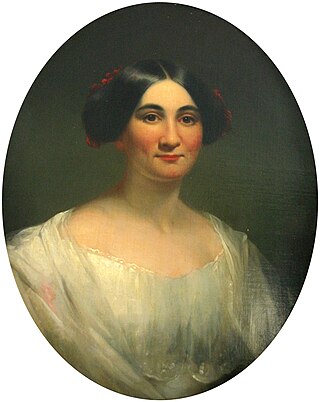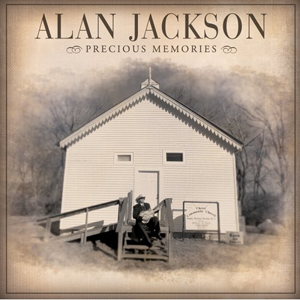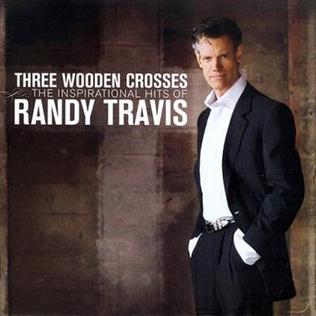
Frances Jane van Alstyne, more commonly known as Fanny J. Crosby, was an American mission worker, poet, lyricist, and composer. She was a prolific hymnist, writing more than 8,000 hymns and gospel songs, with more than 100 million copies printed. She is also known for her teaching and her rescue mission work. By the end of the 19th century, she was a household name.
Joseph Palmer Knapp was an American publisher and philanthropist. He was Chairman of the Board and principal shareholder of the Crowell-Collier Publishing Company. Knapp has also been credited with the invention of the multi-color six-cylinder press.

Phoebe Palmer was a Methodist evangelist and writer who promoted the doctrine of Christian perfection. She is considered one of the founders of the Holiness movement within Methodist Christianity.

Phoebe Knapp was an American composer of music for hymns and an organist. She composed the music for over five hundred hymns.

Phoebe Cary was an American poet, and the younger sister of poet Alice Cary (1820–1871). The sisters co-published poems in 1849, and then each went on to publish volumes of their own. After their deaths in 1871, joint anthologies of the sisters' unpublished poems were also compiled.
Kingdom songs are the hymns sung by Jehovah's Witnesses at their religious meetings. The current hymnal used by the organization is "Sing Out Joyfully" to Jehovah. In addition to the current and previous hymnals containing sheet music and lyrics, releases in various audio formats have included vocals in several languages, piano instrumentals, and orchestral arrangements.

Philip Paul Bliss was an American composer, conductor, writer of hymns and a bass-baritone Gospel singer. He wrote many well-known hymns, including "Hold the Fort" (1870), "Almost Persuaded" (1871); "Hallelujah, What a Saviour!" (1875); "Let the Lower Lights Be Burning"; "Wonderful Words of Life" (1875); and the tune for Horatio Spafford's "It Is Well with My Soul" (1876). Bliss was a recognized friend of D. L. Moody, the famous Chicago preacher. Bliss died in the Ashtabula River Railroad Disaster on his way to one of Moody's meetings. An outspoken Abolitionist, he served as a Lieutenant during the American Civil War.

"All the Way My Savior Leads Me" is a Christian hymn with lyrics written in 1875 by Fanny J. Crosby (1820-1915) to a tune written by the Baptist minister Dr. Robert Lowry.

Precious Memories is the thirteenth studio album and the first gospel album by American country music artist Alan Jackson. It was released on February 28, 2006 on the Arista Nashville label. This project began at The Rukkus Room Recording Studios when Alan Jackson recorded a song for his Father-In-Law’s funeral. This recording led to what is now the Precious Memories album. Unlike his previous albums, this is a side project composed of traditional gospel songs. Although no singles were released from it, Precious Memories earned a Platinum certification by the Recording Industry Association of America (RIAA).
"What a Friend We Have in Jesus" is a Christian hymn originally written by preacher Joseph M. Scriven as a poem in 1855 to comfort his mother, who was living in Ireland while he was in Canada. Scriven originally published the poem anonymously, and only received full credit for it in the 1880s. The tune to the hymn was composed by Charles Crozat Converse in 1868.

Speaking in Tongues is an album by David Murray. It was released on the Canadian Justin Time label. Recorded in 1997 and released in 1999, the album contains performances by Murray with Fontella Bass, Leopoldo F. Fleming, Stanley Franks, Clarence 'Pookie' Jenkins, Ranzell Merritt, Jimane Nelson, and Hugh Ragin.

"Just Awearyin' for You" is a parlor song, one of that genre's all-time hits.

I Love to Tell the Story, A Hymns Collection is a studio album released by Christian singer Mark Lowry. The album was released by EMI Christian Music Group on July 17, 2007. The album features renditions of several traditional and popular Christian hymns.

Three Wooden Crosses: The Inspirational Hits of Randy Travis is a compilation album by Randy Travis. Released in March 2009 by Word/Curb/Warner Bros., the album contains some of Travis' most popular gospel songs.

"I am Thine, O Lord" is one of many hymns written by Fanny Crosby, a prolific American hymn writer. The melody was composed by William Howard Doane. The former was talking with the latter one night about the proximity of God and penned the words before retiring for the night. It has also been reported that Fanny Crosby, though blind, had a sunset described to her in words before writing the lyrics. Hebrews 10:22 is reported as being a source of inspiration for the hymn:

Preachin' is an album by saxophonist Gene Ammons recorded in 1962 and released on the Prestige label.

Come Sunday is a studio album of Christian hymns and spirituals by the jazz double bassist Charlie Haden and the pianist Hank Jones. It was recorded only a few months before Jones's death in May 2010. It was Haden and Jones's second album in this vein since 1994's Steal Away. Come Sunday peaked at number 4 on the Billboard Top Jazz Albums chart, 10 on the Billboard Top Christian Albums Chart and at 6 on Billboard Top Gospel Albums Chart.
Hymnody in continental Europe developed from early liturgical music, especially Gregorian chant. Music became more complicated as embellishments and variations were added, along with influences from secular music. Although vernacular leisen and vernacular or mixed-language carols were sung in the Middle Ages, more vernacular hymnody emerged during the Protestant Reformation, although ecclesiastical Latin continued to be used after the Reformation. Since then, developments have shifted between isorhythmic, homorhythmic, and more rounded musical forms with some lilting. Theological underpinnings influenced the narrative point of view used, with Pietism especially encouraging the use of the first person singular. In the last several centuries, many songs from Evangelicalism have been translated from English into German.














